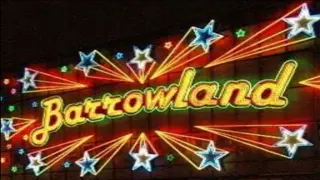Buai-Buai Dance as a Symbol of Agriculture in West Sumatra: A Cultural Exploration
The Buai-Buai dance, originating from Pesisir Selatan in the 18th century, symbolizes agricultural practices in West Sumatra. Through research methods like ethnochoreology, this traditional dance has evolved in Padang City, reflecting changes in story, motion, and music. The study delves into the historical development, location, and meaning of the Buai-Buai dance movements, capturing the essence of respect, parental roles, and daily life activities. Explore the rich cultural heritage embedded in this symbolic dance form.
Download Presentation

Please find below an Image/Link to download the presentation.
The content on the website is provided AS IS for your information and personal use only. It may not be sold, licensed, or shared on other websites without obtaining consent from the author.If you encounter any issues during the download, it is possible that the publisher has removed the file from their server.
You are allowed to download the files provided on this website for personal or commercial use, subject to the condition that they are used lawfully. All files are the property of their respective owners.
The content on the website is provided AS IS for your information and personal use only. It may not be sold, licensed, or shared on other websites without obtaining consent from the author.
E N D
Presentation Transcript
Buai-Buai dance as a symbol of agriculture in West Sumatra Muthia rianti 2109343
preliminary Buai-Buai dance has existed since the 18th century, which originated from the Pesisir Selatan. Then the Buai-Buai dance was brought by a community leader to Padang City, whose identity is unknown until now. After the Buai-Buai dance grew and developed in the city of Padang, many changes took place starting from the story, motion, function, dancers and music.
Research methods Types of research method Approach ethnochoreology ethnochoreology qualitative qualitative Descriptive Descriptive analysis analysis
Location and object of research 01 Studio, IX, Kuranji Kuranji City Singo Singo Barantai Barantai Studio, Nagari Nagari Pauh Pauh IX, District, District, Padang Padang City source person 02 M.Sn Irwandi Irwandi Tan Tan Basa, Basa, S.Sn., & & Meri Meri Ramaneli, Ramaneli, S.Pd S.Sn., M.Sn S.Pd Data collection technique 03 Techniques, Observation Observation Techniques, Interviews, Interviews, Documentation, Documentation, Literature Literature Studies, Studies, and Data Data Analysis Analysis and
Research result Development History around AD, dance Selatan how of Buai Buai- -Buai since since the initially initially this came came from from the which which tells tells of sikambang sikambang (royal taking taking care care of Buai dance dance has the 18th this buai the pesisir of the (royal servants) of children children in kingdom. kingdom. has been been around 18th century century AD, buai- -buai buai dance pesisir Selatan the activities activities of servants) in This This buai the the activities activities of Padang Padang City, Village Village in activities, activities, where of of the the community community here also also tells tells how how the taking taking care care of buai- -buai buai dance dance illustrates of the the people City, especially especially in in carrying carrying out where the the main here is is farming, the role role of of their their children illustrates how people of in Pauh Pauh out daily daily main livelihood livelihood farming, it it of parents parents in children of in the in in the
The symbol and meaning of the buai-buai dance movement Sambahmotion: Describing respect before starting the show Tapuakmotion: describing the show will start soon Buaianmotion: Describe the role of parents in raising children malenggang motion: Describing the process of getting down from the house to the yard
The symbol and meaning of the buai-buai dance movement Mambajak motion : rantak kudo motion : how farmers farmers sawah Describing Describing how plow plow the the sawah the farmer's farmer's home to to the rice rice field Describing Describing the journey journey from from home the field Batanam motion : mamadek pamatang motion : how farmers farmers field barriers barriers Describing Describing how make make rice rice field the Describe Describe how activities activities of grow grow rice rice how the of farmers farmers
The symbol and meaning of the buai-buai dance movement Manyabik motion mairik padi motion Manampih motion barabah pulang mandi motion how Describe Describe how the the farmer farmer separates separates the rice rice from from the husk husk how of Describe Describe how the the process process of farmers farmers harvesting harvesting rice the the process process cleaning after Describe Describe how farmer farmer separates separates the the rice rice from from the stem stem how the Describe Describe the of of farmers farmers cleaning their their bodies bodies after work work the the the rice
The symbol and meaning of the buai-buai dance movement saik galamai motion : to Describing Describing gratitude gratitude to farmers farmers rantak kudo 2 motion : the Describing Describing how activities activities of returning returning from their their homes homes how the of farmers farmers from the the fields to fields to
Research discussion ThesymbolandmeaningoftheBuia-buaidance Judging from the results of the research above, namely about the meanings and symbols contained in the buai-buai dance movements, it is very clear that the names of the movements in the buai-buai dance are closely related to the story raised by this buai- buai dance. The content of the buai-buai dance is a story about the life of a family who works in the fields as farmers, and also shows the role of parents in taking care of their children.
Buai-Buai dance is a form of communication that is conveyed through motion, which describes how the activities or livelihoods of the residents in Pauh District. Dance as a medium of communication
Conclusion Based on the results of the research and discussion above, it can be concluded that the Buai-Buai dance has very clear symbols and meanings, starting from the first movement to the last movement. Which tells the activities or activities of the people of Nagari Pauh IX, Kuranji Koto Tangah District in carrying out their daily activities, most of whom are farmers.























